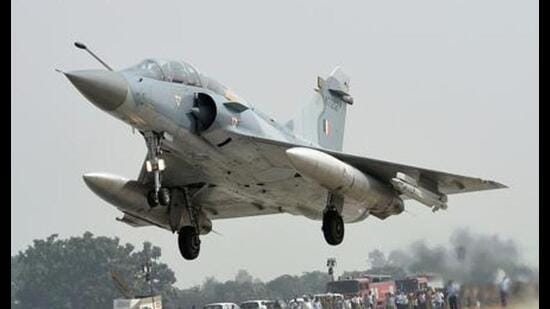Three years of Balakot airstrike: Don’t get complacent about terror
After the Balakot strike, there has been a discernible downward trend in infiltration from across the border and terror attacks/incidents. India’s diplomatic heft and its military capability with the induction of Rafale fighter aircraft with specialist stand-off precision weapons has only increased since then
On February 26, 2019, 12 Mirage 2000 fighter aircraft took off from India and crossed the border to carry out a punitive strike on a Jaish-e-Mohammed (JeM) facility in the Khyber Pakhtunkhwa region of Pakistan. Code-named Operation Bandar, the attack was carried out in retaliation to the Pulwama terrorist attack that killed 40 Central Reserve Police Force soldiers. “In an intelligence-led operation in the early hours of today, India struck the biggest training camp of JeM in Balakot. In this operation a very large number of terrorists, trainers, senior commanders and groups of jihadis who were being trained for fidayeen action were eliminated,” the ministry of external affairs stated.

The Balakot strike was the first time that India carried out a bold manoeuvre, justifying it as a non-military pre-emptive action in the face of imminent danger. Credible intelligence, India said, indicated that more fidayeen attacks were being planned. The Indian government’s intention was unequivocally conveyed to Pakistan and the world that it would no longer resort to dialogue with a nation that repeatedly failed to live up to its promises made in 2004 that Pakistan would not allow its territory for terrorism against India.
The world was in favour of India. Pakistan attempted to deny the damage, claiming that the attacks only destroyed some trees and that there was no loss of life. This plausible deniability, an oft-repeated tactic by Pakistan’s Inter-Services Public Relations, was once again in display, as it had been during the Kargil intrusion, which was initially blamed on militants and Kashmiri freedom fighters.
The jury is still out on the scale of casualties in Balakot, but enough water has flown under the bridge since then.
Pakistan is reeling under economic pressure with repeated requests for a bailout from the International Monetary Fund and World Bank; the nation continues to double its debt every five years. Inflation levels are at a record high, with a huge fiscal deficit. This precarious financial situation is bound to fuel disillusionment with the current government, which came to power with the promise of making a “Naya Pakistan”. Moreover, Pakistan’s honeymoon with the Taliban, which came to power in Afghanistan, after the exit of the United States, is getting sour by the day, with reports of repeated clashes along the Durand line. The illegal sale of arms seized from the departing American forces has given a fresh impetus to this business, which will only fuel further unrest in the region.
For China, whose much-touted “higher than the mountains and deeper than the seas” bond with Pakistan continues to prosper, the US withdrawal from Afghanistan poses its own challenges. China needs to remain vigilant to the spread of terror and militancy with the increasing clout of the TIP and the TTP coupled with the Uyghur unrest in the Xinjiang region. These pose significant risks to Beijing’s investments in the China-Pakistan Economic Corridor. Moreover, China’s strategic alliance with Pakistan will be tested in the near future, with the perilous situation in the neighbourhood after the Taliban take-over of Afghanistan and the disillusionment within Pakistan with its deteriorating economic crisis.
Investments in relationships and policies, when done with vested and parochial interests will never pay dividends. Pakistan’s policy of fomenting terrorism through its soil, China’s alliance with Pakistan as a hedge against India, Pakistan’s support to the Taliban for securing strategic depth and the American partnership with Pakistan to exert influence over Afghanistan have all ensured that the chickens have finally come home to roost.
After the Balakot strike, there has been a discernible downward trend in infiltration from across the border and terror attacks/incidents. India’s diplomatic heft and its military capability with the induction of Rafale fighter aircraft with specialist stand-off precision weapons has only increased since then.
The last Fire Power Display (FPD), carried out by the Indian Air Force, took place two days after the Pulwama attack. This year’s FPD is being carried out on March 7.
The lull in terror attacks must not make us complacent. No. The powder must be kept dry and innovative options must be considered and debated because cold, calculative, and decisive actions, incorporating surprise and deception, will pay dividends and ensure that national security is not compromised.
Is the monkey of cross-border terrorism finally off India’s back? Only time will tell.
Anil Golani is additional director-general, Centre for Air Power Studies, New Delhi
The views expressed are personal





